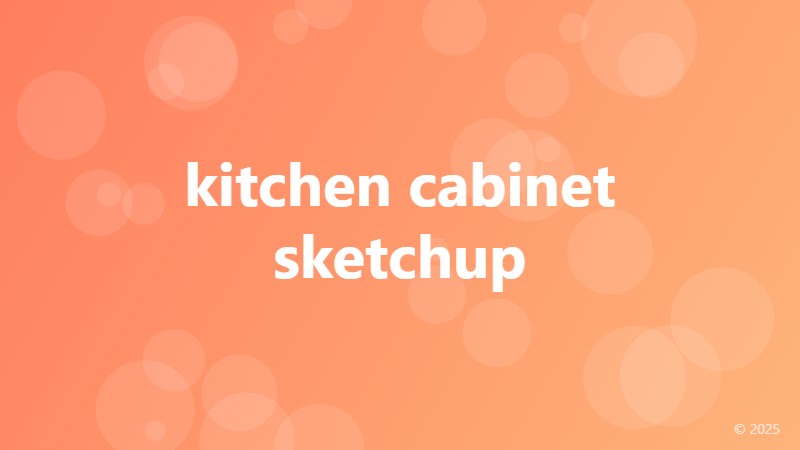kitchen cabinet sketchup

Unlocking the Power of Kitchen Cabinet Design with SketchUp
Designing a kitchen cabinet can be a daunting task, especially for those who are not familiar with the intricacies of kitchen design. However, with the right tools and software, creating a stunning and functional kitchen cabinet design can be a breeze. One such tool that has gained immense popularity in recent years is SketchUp, a 3D modeling software that allows users to create detailed and realistic designs with ease.
The Benefits of Using SketchUp for Kitchen Cabinet Design
So, what makes SketchUp an ideal choice for kitchen cabinet design? For starters, SketchUp offers a user-friendly interface that makes it easy for designers and non-designers alike to create complex designs without requiring extensive training or experience. Additionally, SketchUp's 3D modeling capabilities allow users to visualize their designs in a more immersive and interactive way, making it easier to identify potential flaws and make necessary adjustments.
Another significant advantage of using SketchUp for kitchen cabinet design is its ability to accurately measure and scale designs. This feature is particularly useful when working with limited space or complex layouts, as it ensures that every component fits perfectly and functions as intended.
Getting Started with SketchUp for Kitchen Cabinet Design
If you're new to SketchUp or kitchen cabinet design, getting started can seem overwhelming. However, with a few simple steps, you can begin creating stunning designs in no time. Here's a step-by-step guide to get you started:
1. Download and install SketchUp on your computer or mobile device.
2. Familiarize yourself with the SketchUp interface and tools by watching tutorials or online courses.
3. Create a new project in SketchUp and set the units to inches or centimeters, depending on your preference.
4. Draw the basic shape of your kitchen cabinet using SketchUp's drawing tools.
5. Add doors, drawers, and other components using SketchUp's 3D modeling tools.
6. Experiment with different materials, textures, and colors to bring your design to life.
Tips and Tricks for Creating Stunning Kitchen Cabinet Designs with SketchUp
To take your kitchen cabinet designs to the next level, here are some tips and tricks to keep in mind:
1. Pay attention to scale and proportion to ensure that your design is realistic and functional.
2. Experiment with different layouts and configurations to find the most efficient use of space.
3. Use SketchUp's grouping and component tools to organize and manage complex designs.
4. Don't be afraid to try new things and make mistakes – SketchUp's undo feature allows you to experiment and correct errors with ease.
By following these tips and tricks, and with practice and patience, you can create stunning kitchen cabinet designs that will impress clients and inspire creativity.